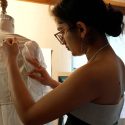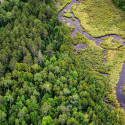Photo gallery The buzz about cicadas
Curious nature lovers crowded to Cicadapalooza, held on June 8 in Lake Geneva, Wisconsin, to learn all about the noisy bugs. The University of Wisconsin–Madison entomology department held the event in honor of this year’s periodical cicada emergence, which is particularly strong in Lake Geneva. Events included walking tours to observe the periodical cicadas and talks by UW professor Dan Young, director of the Wisconsin Insect Research Collection, and Extension entomologist PJ Liesch. Visitors explored cicada-, insect-, and nature-themed tables, and asked questions of UW bug experts.
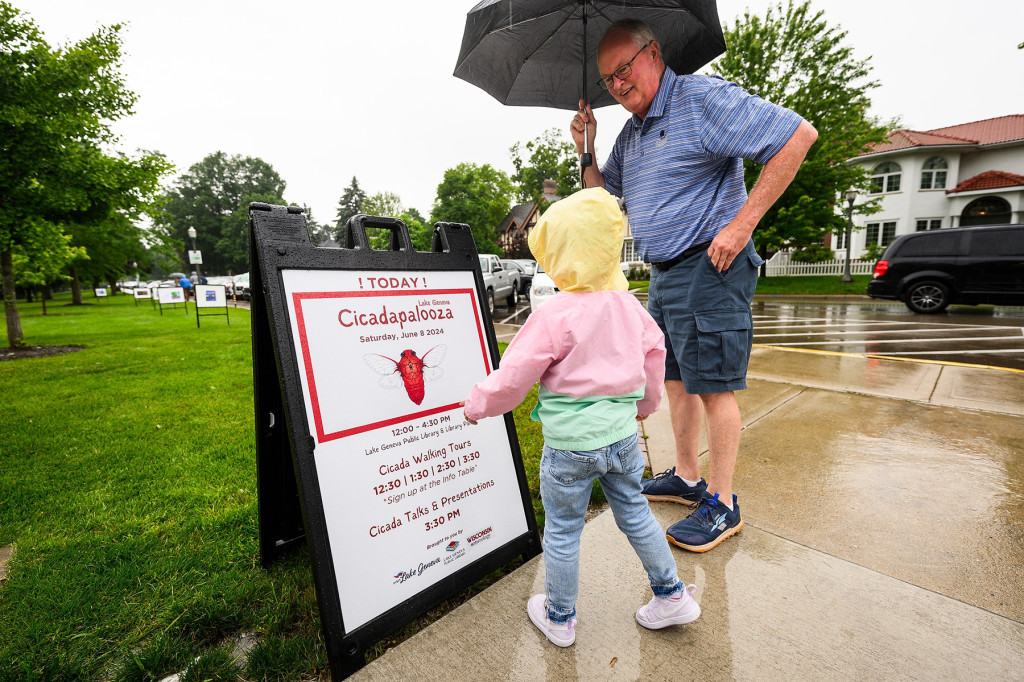
A young visitor looks at the sign for Cicadapalooza, an event hosted by Visit Lake Geneva and the UW–Madison Department of Entomology in Lake Geneva on June 8. Photo by: Althea Dotzour
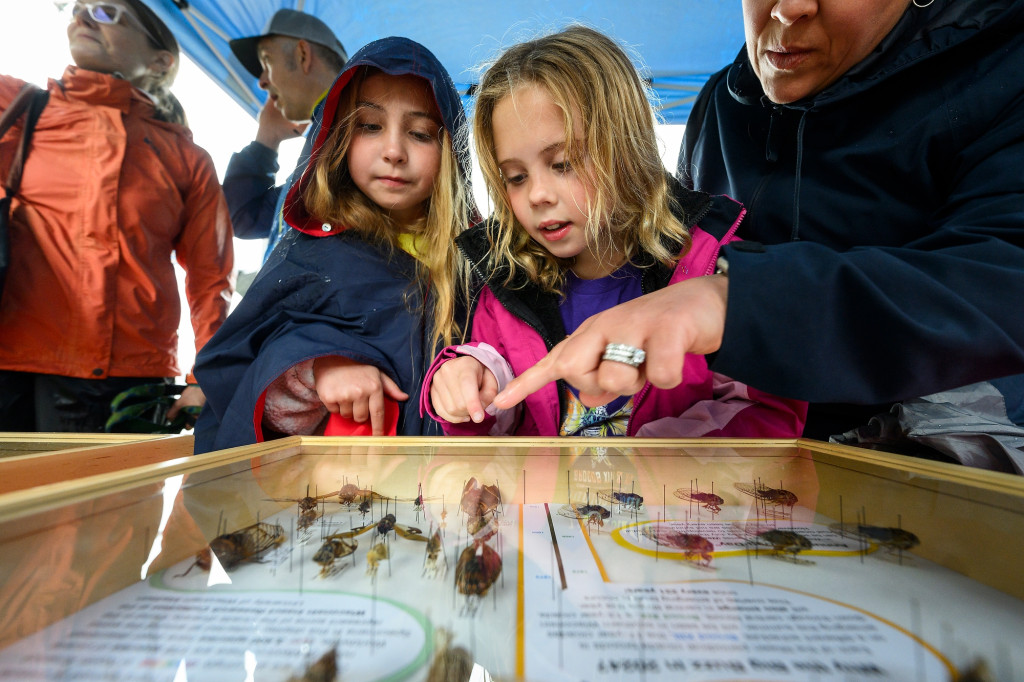
From left to right, Mabi Urban, age 8; Emery Otzen, age 5; and Kelly Otzen of Lake Geneva examine preserved cicadas specimens while learning from UW entomologist Claudio Gratton. Otzen said: “The kids have been picking up lots of cicadas and are really into science.” Photo by: Althea Dotzour
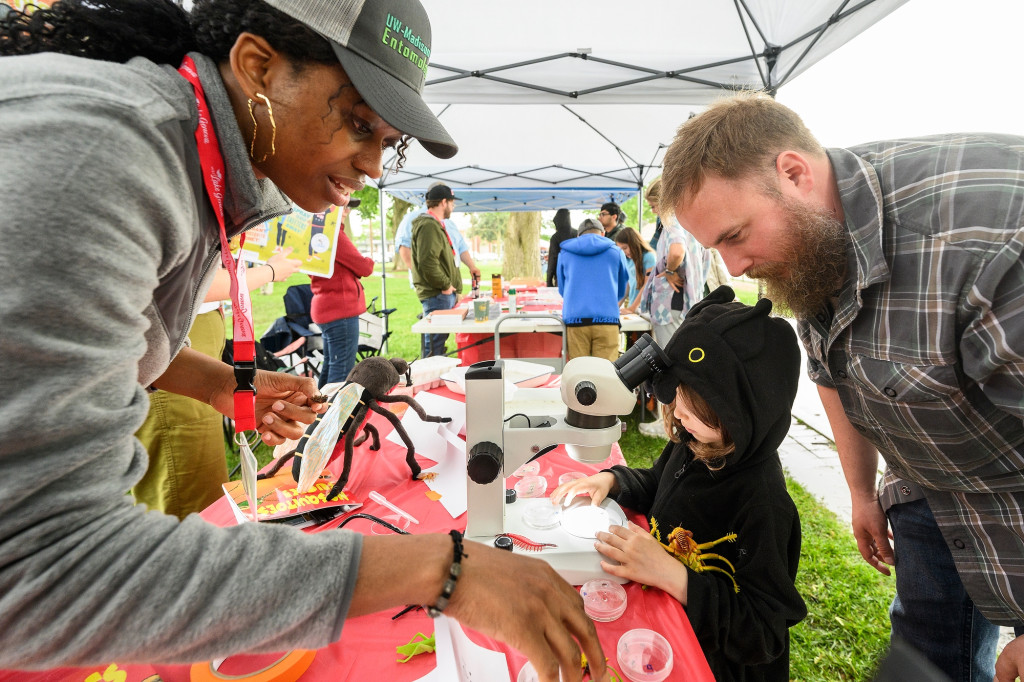
It wasn't all about cicadas. Here, Linda Oforka, UW–Madison entomology teaching faculty member, shows mosquito samples to five-year-old Lochlyn (dressed as a bat) and Ed Black. Photo by: Althea Dotzour
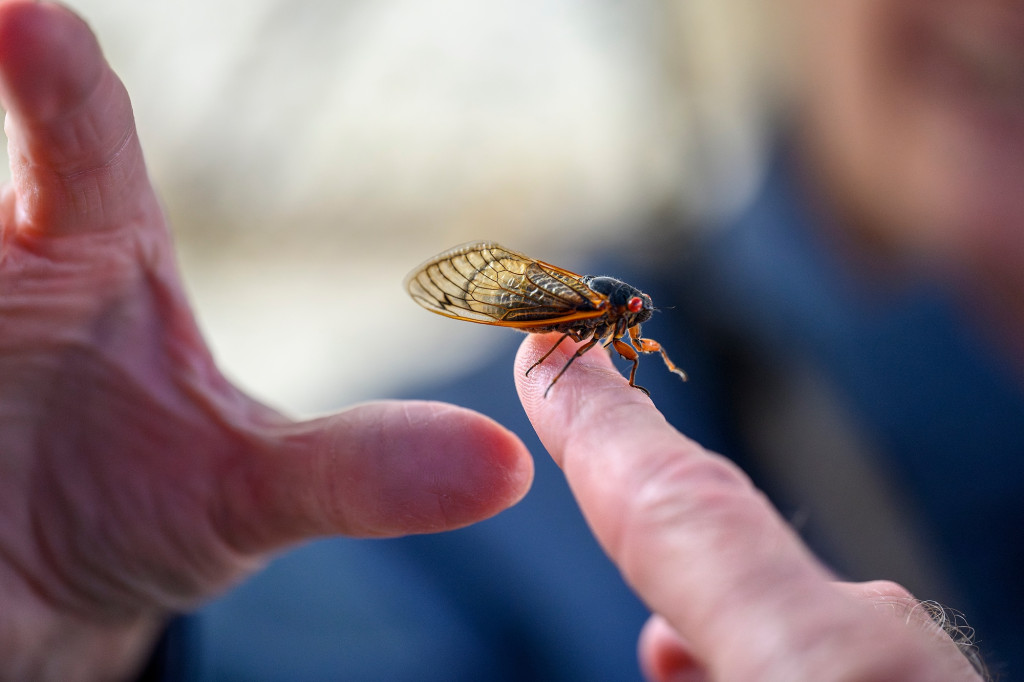
But it was mostly about cicadas. Here, a live cicada from the 17-year brood passes between the hands of Dave Oelert and Debbie Oelert, from Richmond, Illinois. Photo by: Althea Dotzour
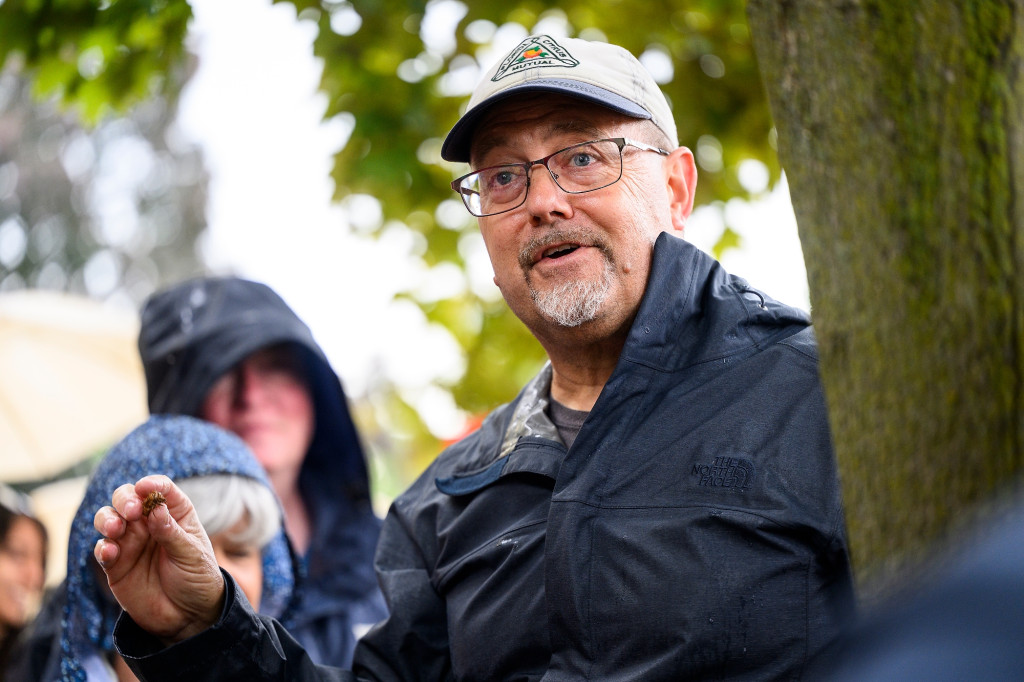
Russell Groves, professor, Extension specialist and entomology department chair, holds a cicada while leading a rainy tour at Cicadapalooza. Photo by: Althea Dotzour
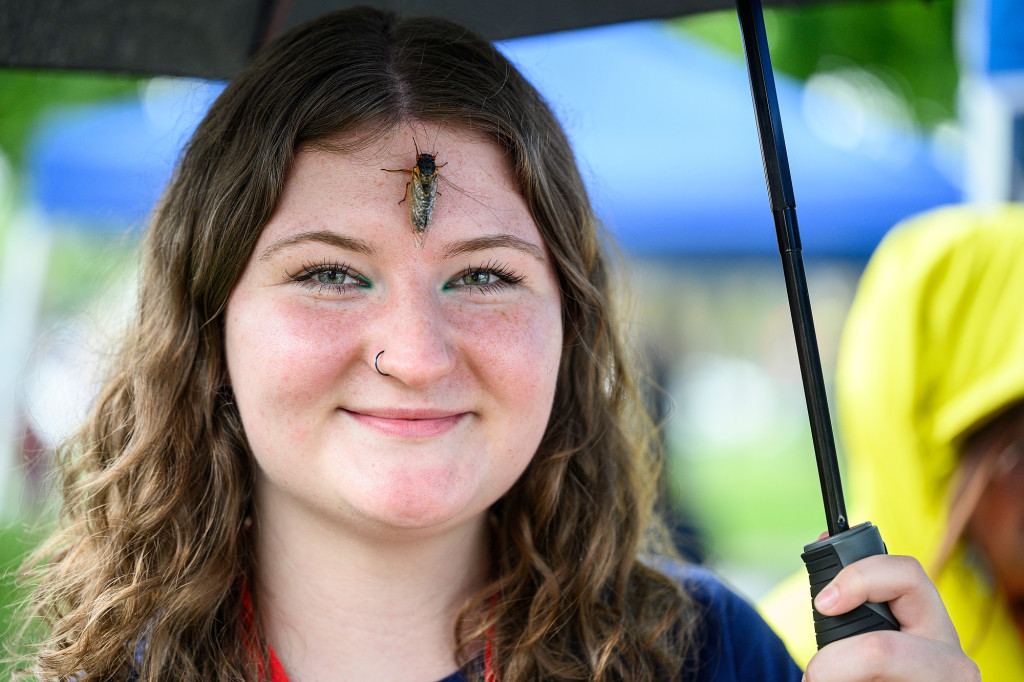
Morgan Weissner, graduate student in entomology, volunteers as an insect ambassador and studies integrated pest management. She works with sustainable control methods for managing the Colorado potato beetle. Photo by: Althea Dotzour
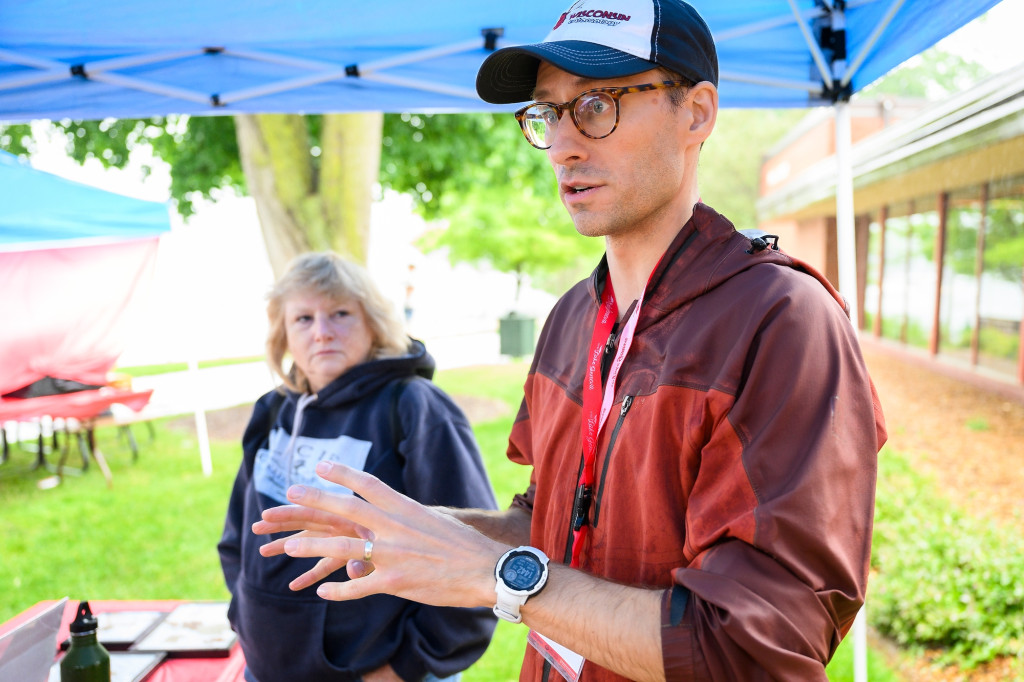
PJ Liesch, director of the Insect Diagnostic Lab and extension entomologist in the Department of Entomology, answers cicada-related questions from visitors. Photo by: Althea Dotzour
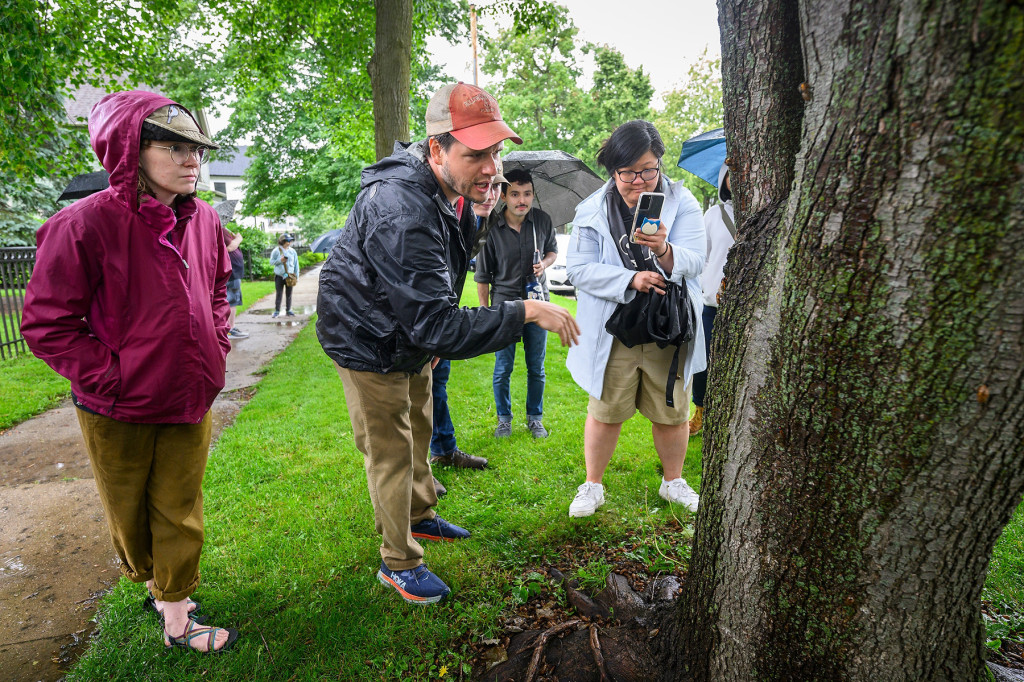
James Crall, assistant professor of entomology, leads a neighborhood tour in search of cicadas. Photo by: Althea Dotzour
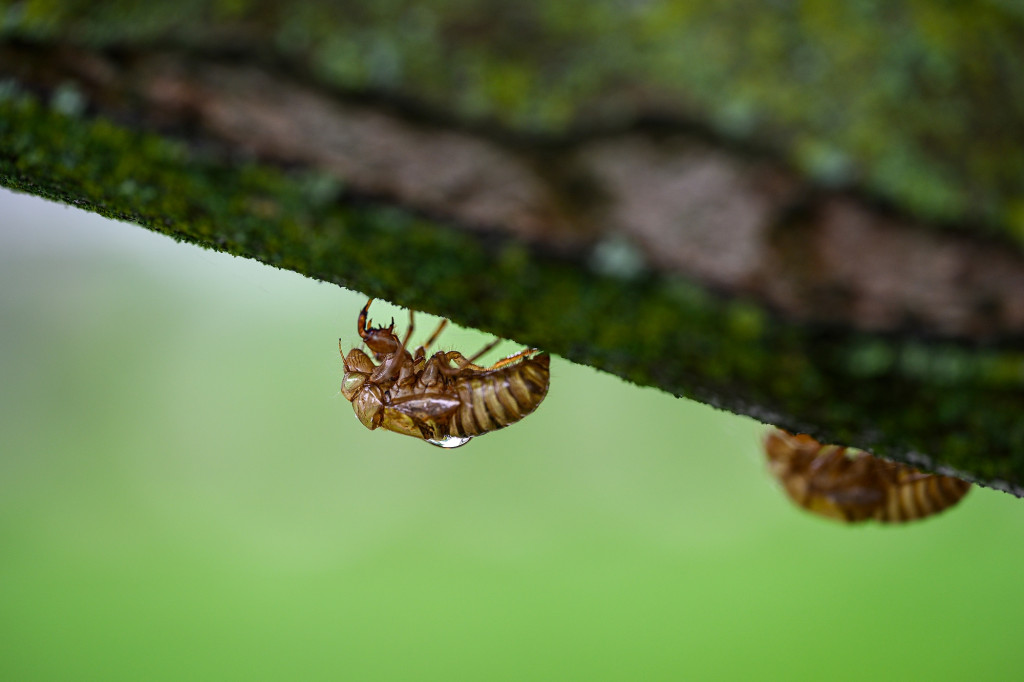
Empty cicada casings cling to a branch. Their former inhabitants have moved onward and upward into the tree canopy. Photo by: Althea Dotzour

